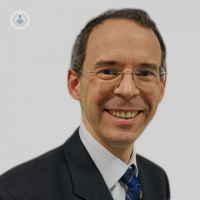Keloid scars – what causes them, and how are they treated?
Autore:Scar tissue forms naturally when a break in the skin occurs, however, some scar tissue continues to grow, leaving large, unsightly scars, known as keloid scars. As keloid scars are more common on the head, neck, ears, chest and shoulders, you may not like the appearance of them, and may want to remove them or stop them growing further. With the help of leading consultant dermatological plastic surgeon, Mr Alastair Mackenzie Ross, we take a look at the ways of achieving this.

How do scars form?
Scarring occurs as a result of the healing process following a break in the skin such as a cut, burn, piercing, bite, or breaks caused by acne. The skin produces extra collagen, the protein that makes up the skin, which builds up around the break in the skin to build new skin, protect from infection, and to seal the wound. Once the wound heals, the collagen development ceases, and eventually the scar tissue decreases in size over time until it is less noticeable.
Who gets keloid scars?
Around 10-15% of all wounds can develop keloid scarring, where the scar tissue grows in size to be bigger than the original wound. They don’t usually cause pain, but can become tender, itchy, and sometimes cause a burning sensation. If the keloid scarring forms on skin that needs to move a lot and be flexible, it may cause restriction of movement.

Keloid scars are more common in people aged between 10 and 30 years old, and are more common in people with dark skin. They can be genetic, so if other people in your family have had keloid scarring, there may be a chance that you will develop it too.
How are keloid scars treated?
There is no cure for keloid scars, and some people may be more prone to developing them than others, however there are some ways that the keloid scars can be treated.
-
Cryotherapy
Freezing the keloid scars with liquid nitrogen during the early stages of a keloid scar can halt the growth. -
Steroid injection
The steroid is injected directly into the scar tissue, and is better during early formation. The steroid injection stops the keloid tissue developing, and may cause the scar to flatten. -
Surgery to remove the keloid
Surgery can be performed to remove the keloid tissue. As there is a risk that further keloid tissue may develop, you may be required to be given steroid injections at the site of the surgery shortly afterwards, to help reduce the chance of keloid scarring developing. -
Radiotherapy
Radiotherapy can be used in very selected cases to help stop a keloid scar returning after surgery.
If you have keloid scars, and would like to talk about the options available for treatment, make an appointment with a specialist by visiting the profiles here.


